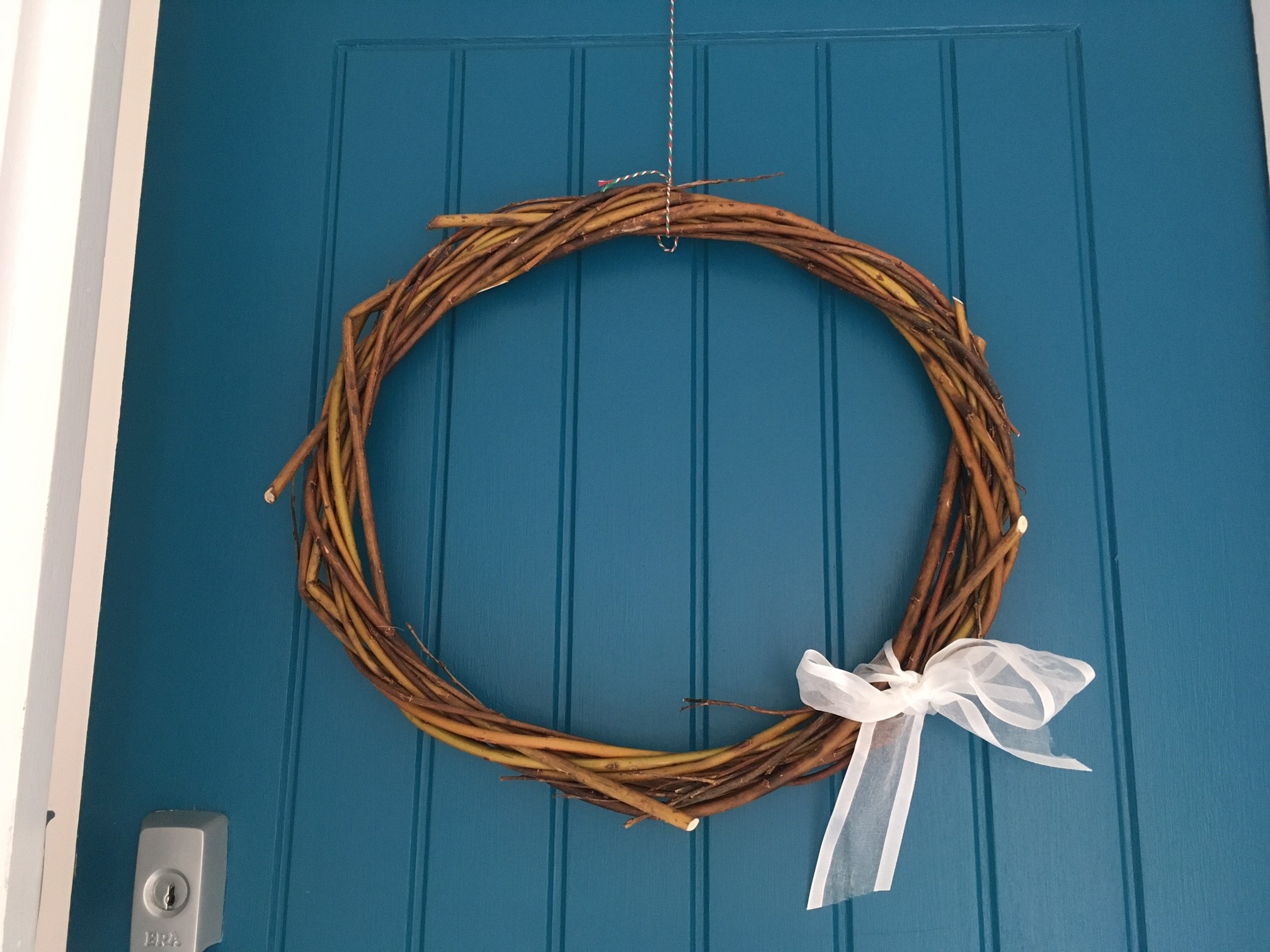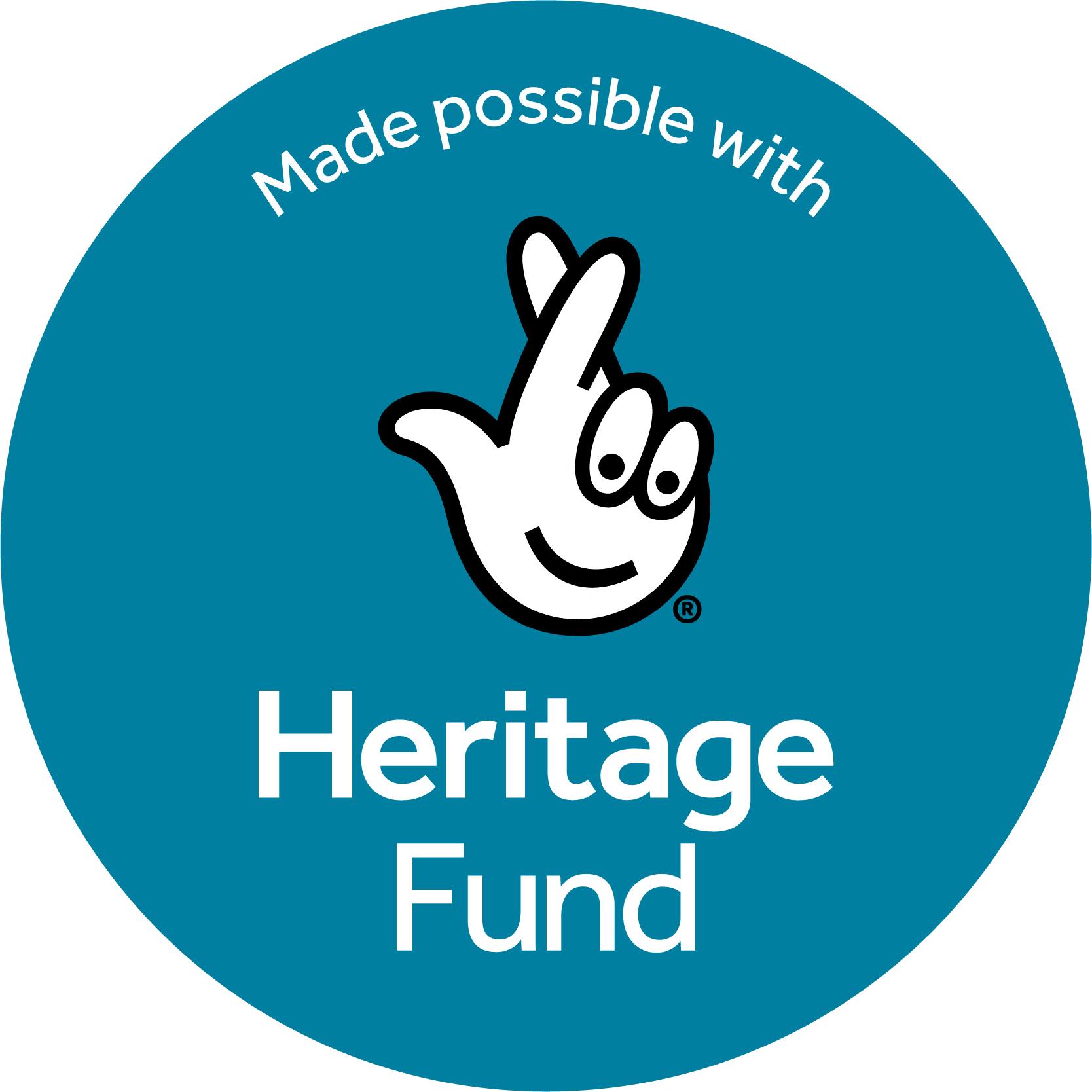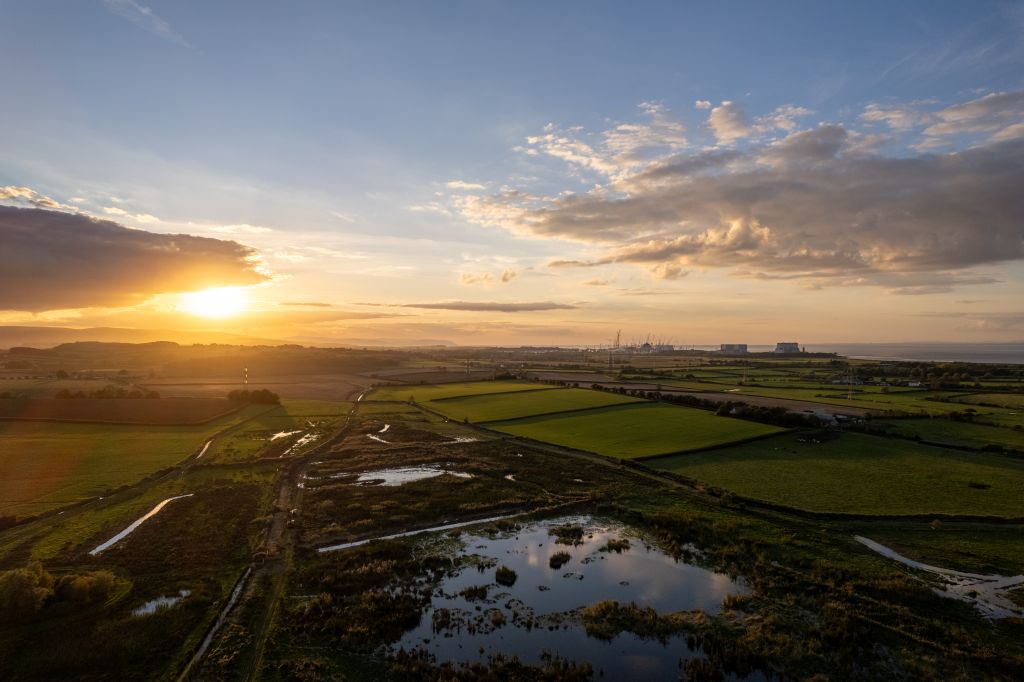Can you spot our new working wetland signs?
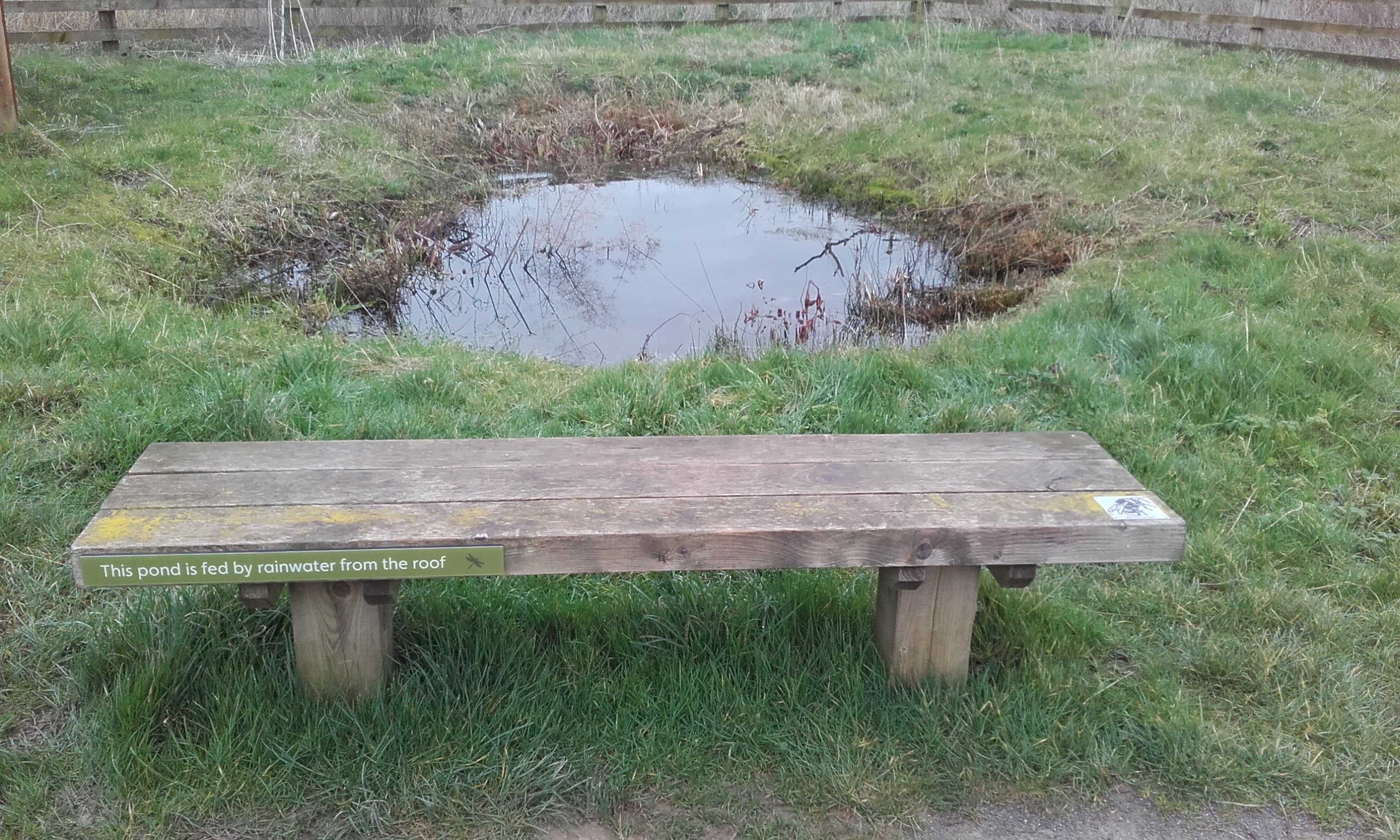
A working wetland provides multiple benefits to people and wildlife, whilst also helping to improve water quality or reduce flood risk. We are showcasing some examples of mini working wetlands around the reserve, and have just installed our latest information signs to highlight these features and explain what they do.
We hope to inspire you to have a go at creating something similar at home. If every house had a green roof or a mini wetland, this would create new habitat for wildlife, clean and slow the flow of water, and act to dramatically reduce the run-off entering drainage systems.
Why not visit Steart Marshes & search out our newest working wetland signs hidden around the reserve?
They include:
- Wildlife pond next to the toilets (see picture above). This is fed with water from the toilet block roof and creates a habitat for plants and aquatic invertebrates, not forgetting the bees and other insects that stop off for a drink! Water flow is slowed, and the plants take up nutrients, helping to clean the water. If you don’t have much space, a pond can be as small as a tub or bowl sunk into the ground.
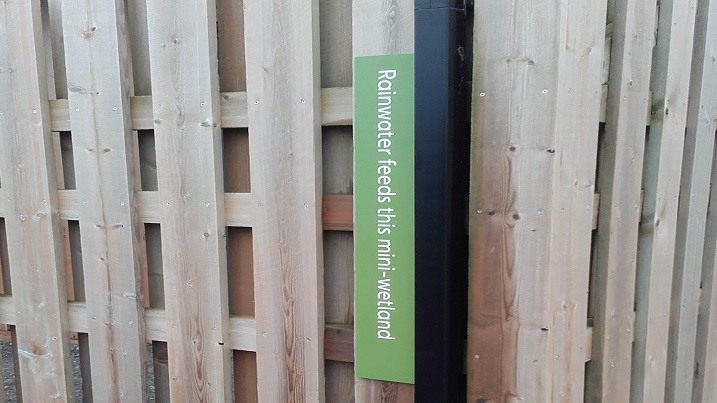
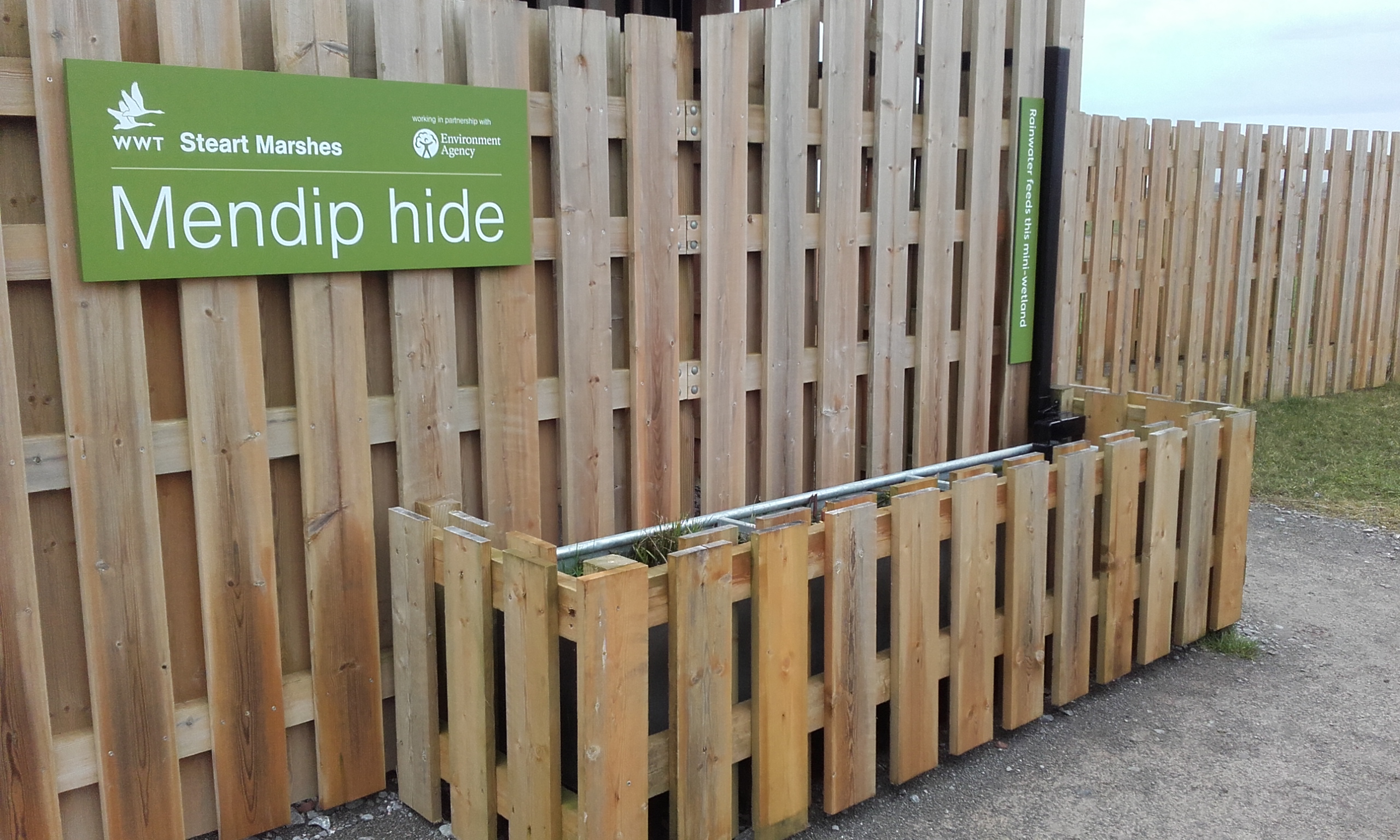
- Planted trough at the Mendip hide. This creates habitat for insects such as bees, and dragonflies, whilst also showcasing some of the aquatic plants which could be used in mini ponds at home. It is fed with water from the roof and acts to slow the flow and clean the water. A trough can be a good alternative to digging a pond.
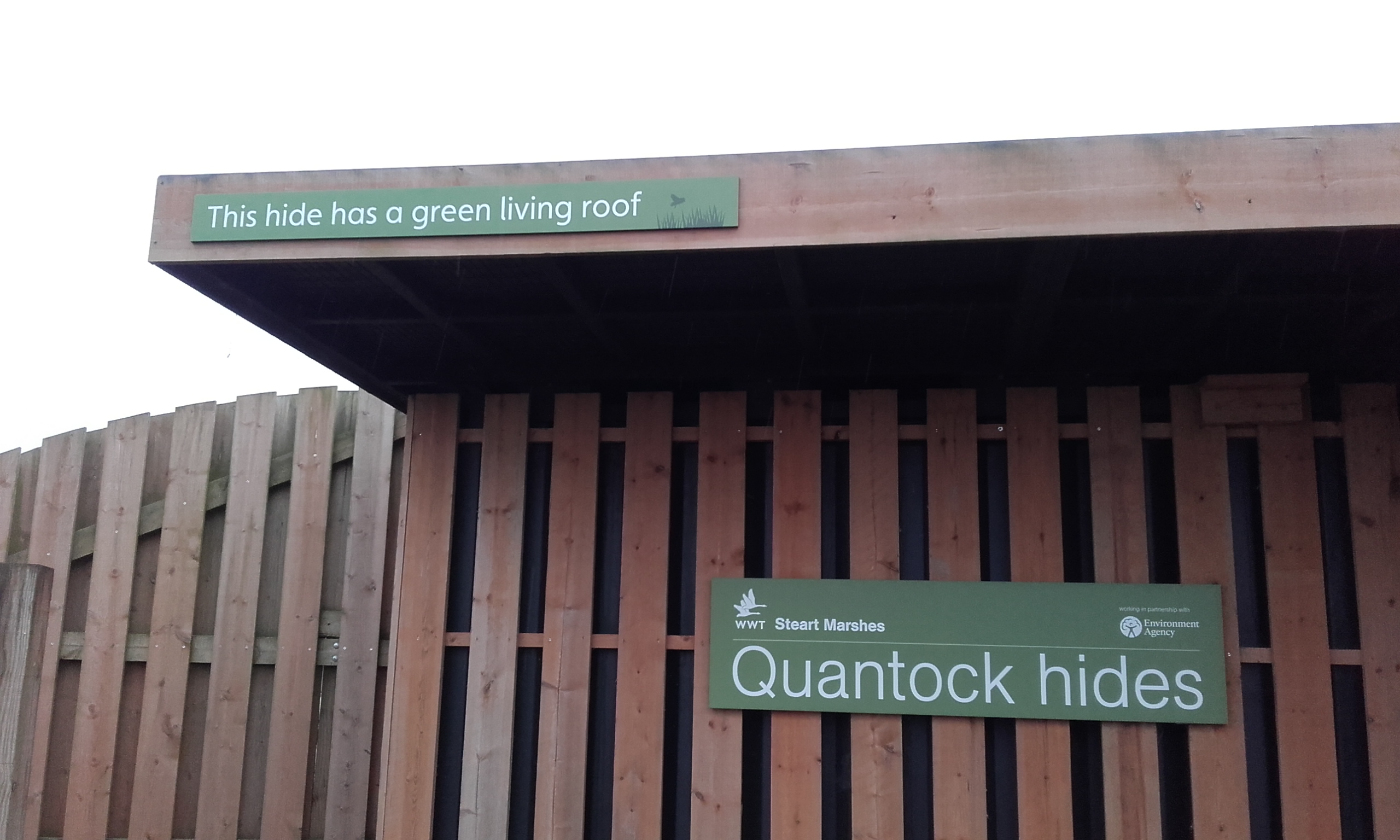
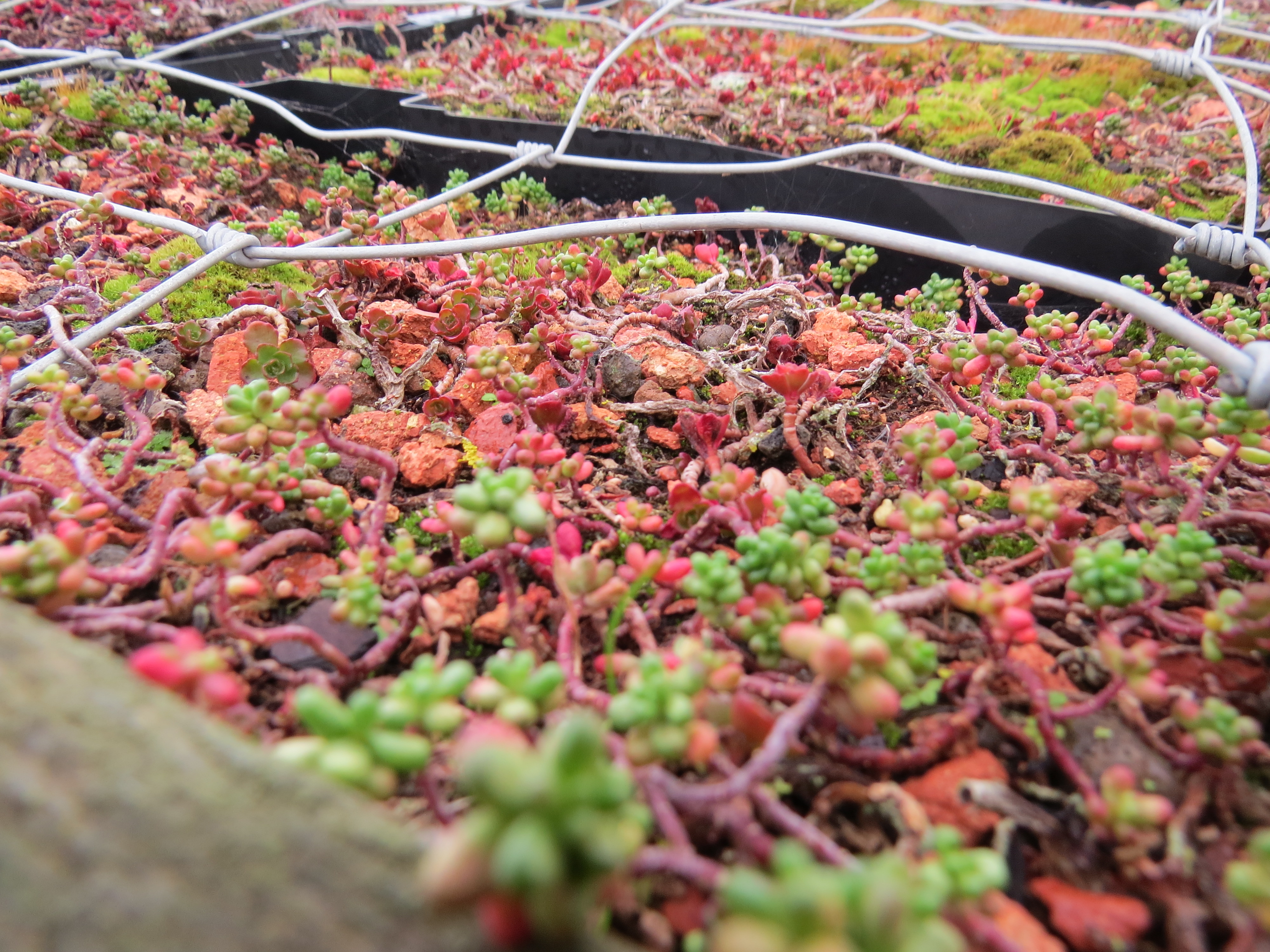
- Green ‘living’ roofs on our 4 hides. These are planted with trays of sedum and act to absorb water and slow the run-off at times of heavy rain. The sedum also has the advantage of being drought tolerant.
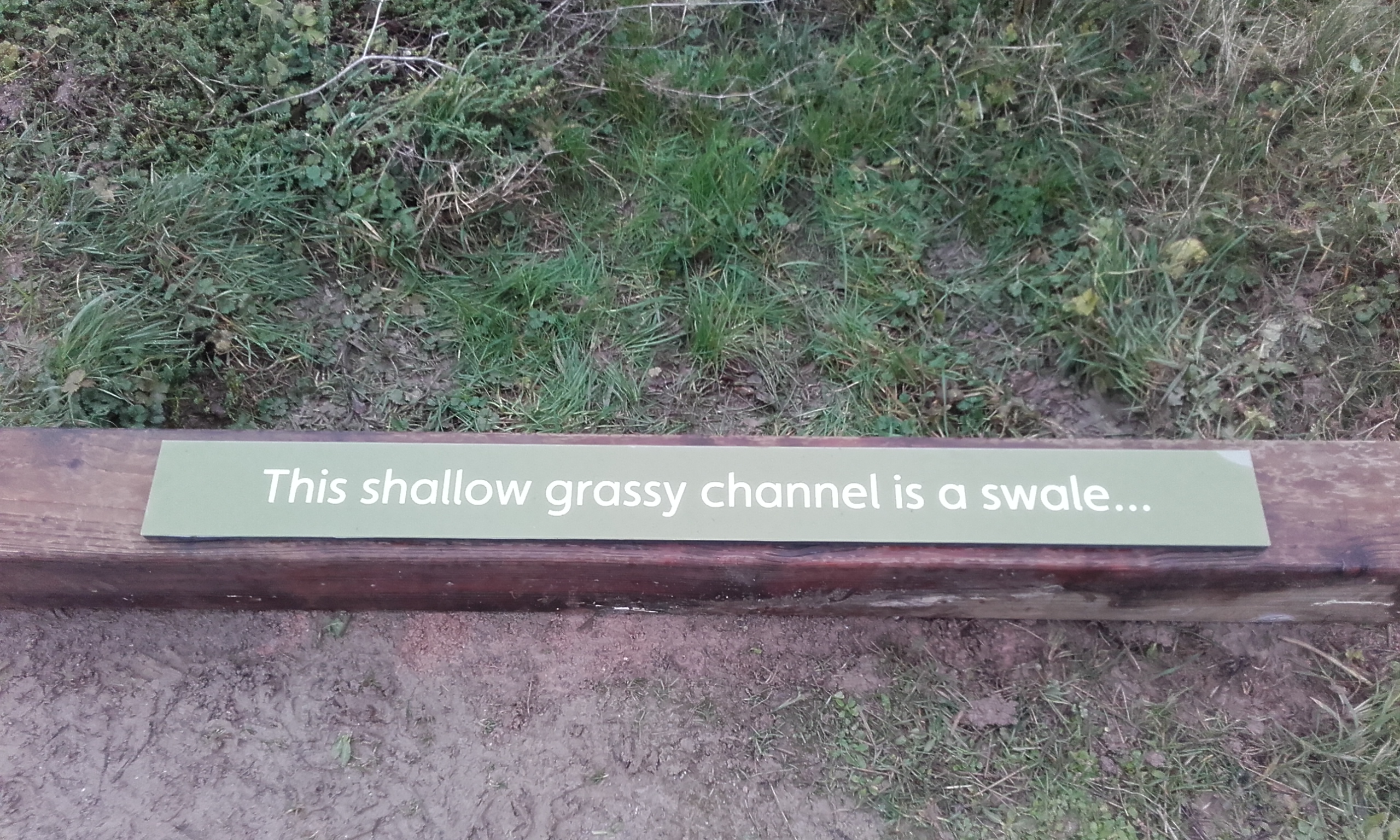
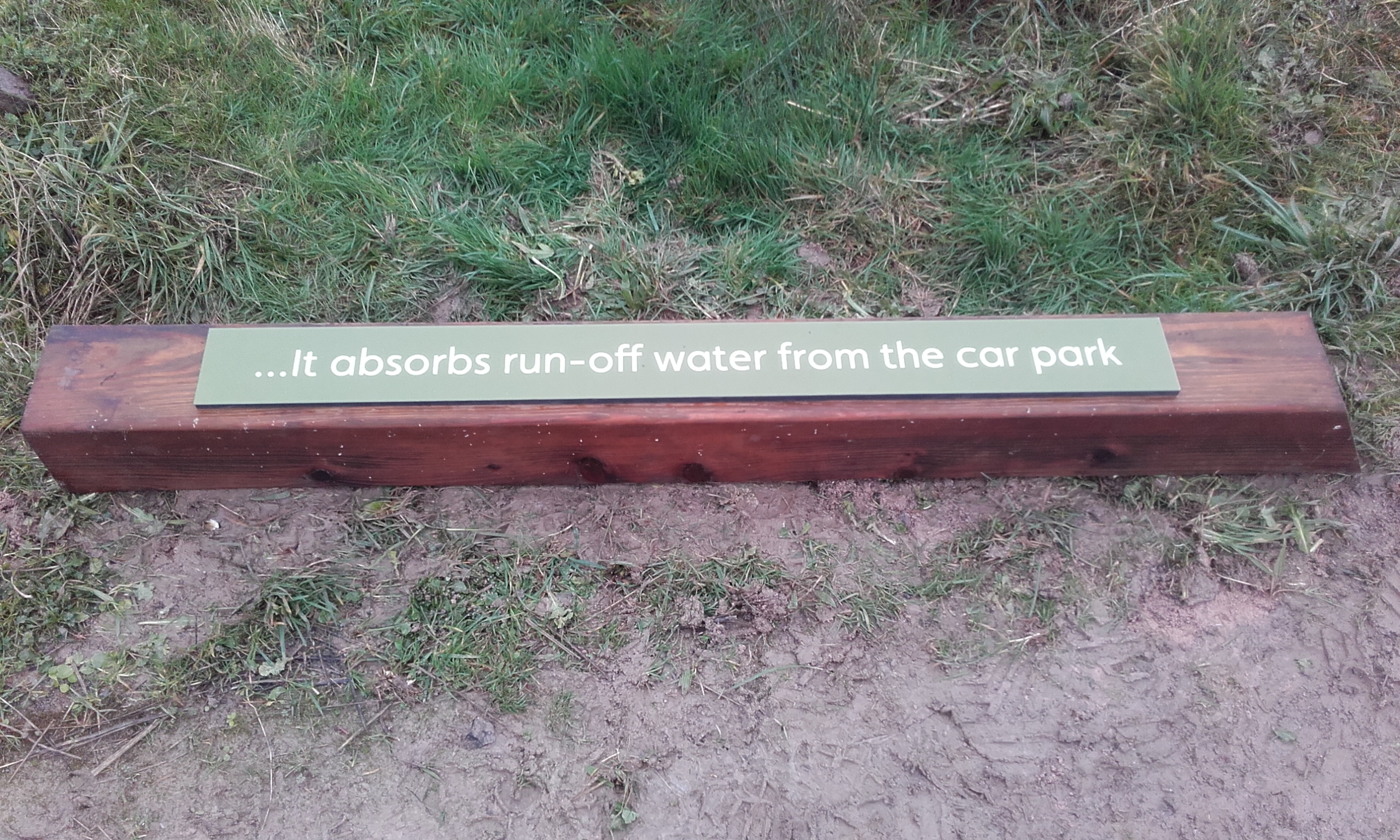
- Swales. Have you noticed the ditches along the edges of the car park? These are swales, designed to take run-off from the car park. The planting will slow the flow and act to clean the water. Swales like this are valuable assets in new housing developments acting to reduce the pressure on drainage systems.
- There is also a swale/pond at the Quantock hide, fed with water from the hide roof. It is designed to hold water in long or heavy periods of rain, slowing the flow of the water. This serves as a small scale example of how we manage our freshwater areas on the reserve.
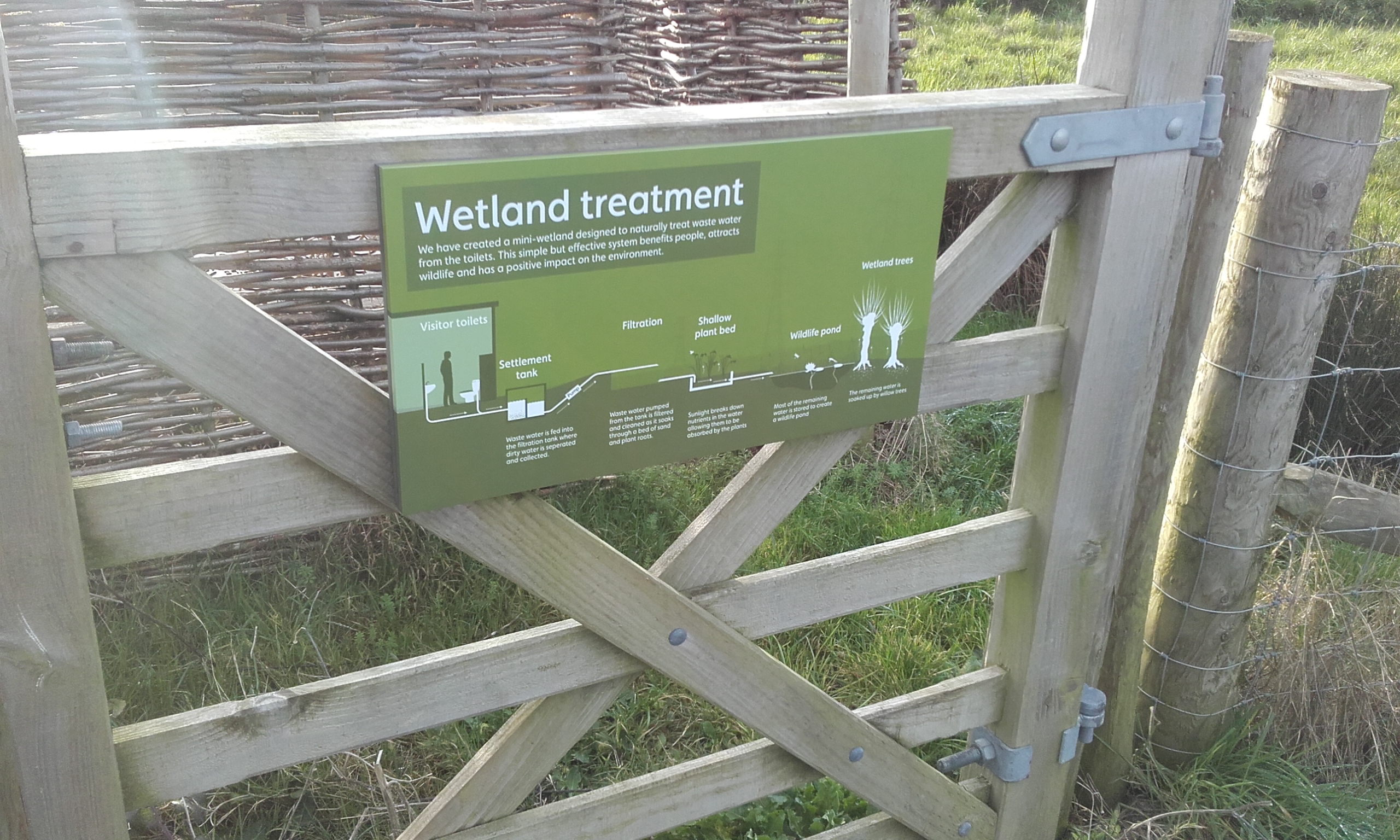
- We have also renewed our signs to explain the treatment wetland system next to the car park. This takes liquid waste from the toilets, which travels from the settlement tank, filters through a sand bed, aquatic plants, a pond, and finally a willow bed and wet woodland. The treatment system acts to clean the water naturally by filtration and the action of sunlight, before it returns to the land. You will notice some more information as you dry your hand in the toilets!
We hope you enjoy discovering these working wetland features around the reserve on your next visit. If you feel inspired to try out some ideas at home then take a look here for more information: wwt.org.uk/discover-wetlands/gardening-for-wetlands/
